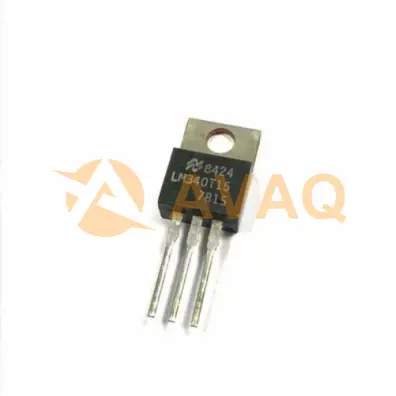The IC 7815 is a widely used voltage regulator in electronic circuits, designed to maintain a stable +15V output despite variations in the input voltage. As part of the 78xx series of voltage regulators, it plays a crucial role in ensuring that electronic components receive a consistent and reliable power supply. This article delves into the features, applications, and usage of the IC 7815, providing a comprehensive overview of this essential component.

Key Features of the IC 7815
The IC 7815 is characterized by its ability to provide a fixed output voltage of +15V, making it ideal for circuits that require a stable power supply. Here are some of its key specifications:
- Output Voltage: The IC 7815 delivers a constant +15V output, which is crucial for powering sensitive electronic components.
- Input Voltage Range: To function correctly, the input voltage should be at least 17V and can go up to 35V.
- Output Current: This regulator can supply up to 1.5 amperes (1.5A) of current, making it suitable for various applications.
- Thermal and Short-Circuit Protection: The IC 7815 includes built-in protection features such as thermal overload and short-circuit current limiting, enhancing its reliability in different environments.
- Package Availability: It is available in multiple packages like TO-220, TO-3, and D2PAK, providing flexibility in its usage across different designs.
Applications of the IC 7815
The IC 7815 is a versatile component with a wide range of applications. Here are some common uses:
- Powering Microcontrollers and Sensors: The IC 7815 is frequently used in circuits that power microcontrollers and sensors, ensuring they receive a steady +15V supply.
- Current Limiting: It can act as a current limiter in applications where it is necessary to control or restrict the flow of current to prevent damage to other components.
- Voltage Stabilization in Audio Amplifiers: In audio circuits, the IC 7815 helps stabilize the voltage, leading to consistent and distortion-free audio output.
- Battery Charging Circuits: The regulator is often employed in battery charging circuits, maintaining a stable voltage output during the charging process.
- Industrial Automation Systems: In industrial settings, the IC 7815 is used to regulate the voltage supplied to control modules and sensors, ensuring their proper operation.
IC 7815 Equivalent Parts
In cases where the IC 7815 is unavailable or if an alternative is preferred, several equivalent parts can be used:
- LM340-15: A positive voltage regulator with similar output voltage and current specifications.
- LM7915: A negative voltage regulator offering -15V output, suitable for circuits requiring complementary voltage regulation.
- LM317: An adjustable voltage regulator that can be set to provide a +15V output with appropriate external components.
Practical Application: Power Supply Circuit with IC 7815
A practical use case of the IC 7815 involves its integration into a power supply circuit. This setup typically includes a MOSFET to regulate voltage, with the IC 7815 controlling the output to ensure a consistent +15V supply. Additional resistors and capacitors are used to stabilize the circuit and eliminate oscillations, especially at higher frequencies. This configuration is common in laboratory power supplies and industrial automation systems where precision and reliability are paramount.
Conclusion
The IC 7815 is a fundamental component in many electronic circuits, offering a reliable and stable +15V output. Its versatility and built-in protection features make it an essential choice for powering microcontrollers, sensors, and other sensitive components. By understanding its pin configuration, the role of capacitors, and potential equivalents, you can effectively incorporate the IC 7815 into a wide range of applications, ensuring your circuits operate smoothly and efficiently. Whether you’re working on an industrial automation system or a simple audio amplifier, the IC 7815 remains a go-to solution for fixed voltage regulation.
Related: IC 7815 Voltage Regulator: Pinout, Datasheet and How to Use
Discussions
Become a Hackaday.io Member
Create an account to leave a comment. Already have an account? Log In.